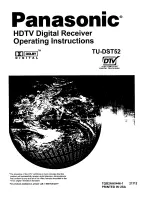
BARRETT 2030 HF SSB TRANSCEIVER
10 of 208
Introduction
The Barrett 2030 transceiver is a DSP based, 30 channel HF SSB transceiver with
a frequency range of 1.6 to 30 MHz. The Barrett 2030 is designed using the latest
technology enabling a physically small package with a full feature complement.
Designed to operate in the most arduous environments, as encountered in off road
vehicles, vessels and aircraft, the Barrett 2030 will provide many years of efficient
and trouble free service.
The Barrett 2030 supports features such as Selective Call (Selcall), direct dial
telephone connection to base stations fitted with telephone interconnect systems
(Telcall), GPS location and remote diagnostics. These features make the Barrett
2030 HF transceiver one of the most economical and versatile HF transceivers
available today.
The Barrett 2030 transceiver, has catered for the increased use of HF data
transmission for Internet email access and point to point data applications, by
providing a comprehensive data modem interface port, high speed transmit to
receive switching, a high stability frequency standard and an efficient cooling
system option.
The Barrett 2030 transceiver can be operated in either a local (desktop)
configuration for base station applications or, with the addition of an inexpensive
mobile pack, in a remote control (trunk mount) configuration for mobile applications.
Operating from 12 volt (13.8 V DC) DC supplies, the transmitter is rated at 125 watt
PEP in voice mode and is protected from over-voltage or reverse voltage
application.
All 30 channels are available to be field or workshop programmable. Auxiliary
features such as Selcall, Telcall, scanning, mute status, alarm system etc. can be
individually enabled or disabled for every channel as required to suit your operation.
Teamed with other matching Barrett 2000 series products which include antennas,
power supplies, vehicle tracking packages and HF modems, the Barrett 2030 HF
transceiver becomes a powerful tool, providing solutions to many long distance
communication requirements.











































